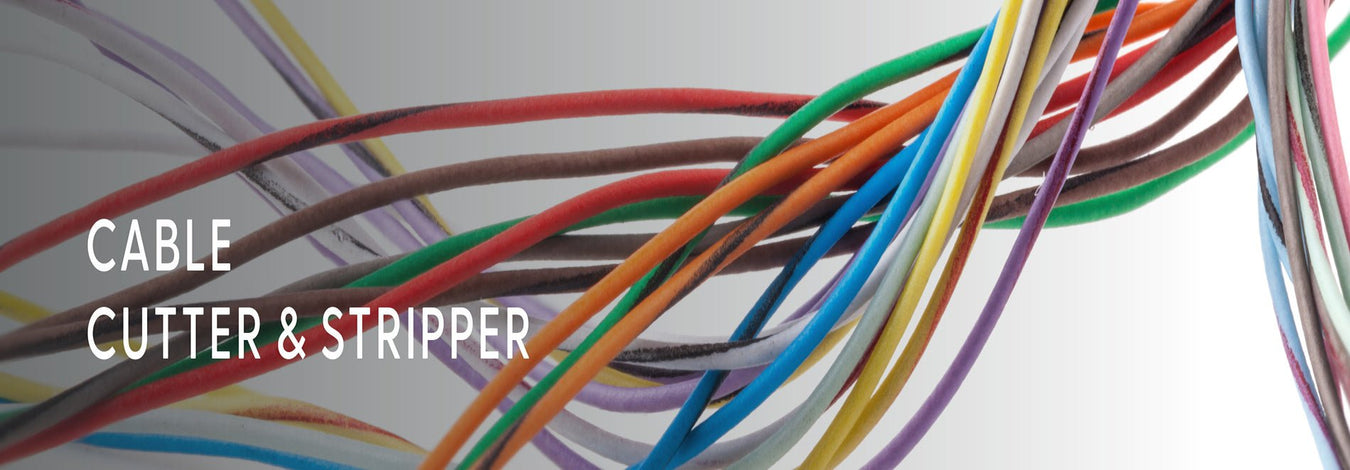
What is the Difference Between a Crimp and a Ferrule?
In electrical work and cable management, crimp and ferrule are sometimes used to refer to the same component but to different aspects of the same activity. People who wire or install wires and follow the instructions in electrical installations or maintenance should separate between the two. This article will help us understand the two and distinguish between them, their uses, and how to use a cable ferrule crimping tool.
What is a Ferrule?
A ferrule is a small metallic tube that reinforces the stranded wire's ends so they fit correctly onto terminal blocks or any other component. Insulated ferrules and non-insulated ferrules are available, and they range in size depending on the gauge of the wires that are to be terminated.
Functions of a Ferrule
- Reinforcement: Keeps the end of the wire from unraveling, and it effectively maintains all the strands of the wire in place—for example, the iCrimp Ratcheting Crimping Tool Set for Insulated and Non-Insulated Ferrules.
- Conductivity: It is supposed to boost the electrical contact as it increases the size of the contact surface.
- Ease of Insertion: Used in wiring to ensure easy placement of wires into terminal blocks or connectors.
What is a Crimp?
A crimp is formed during a procedure to bend a connector or terminal on the wire to provide stable electrical and mechanical contact. This stage requires the actual crimping, where through the use of a crimping tool, one is used to 'squeeze' the connector onto the wire to form a strong bond between the two and to be able to allow the proper flow of electricity as well as the needed strength. An ideal example is the iCrimp Open Barrel Terminal Crimper.
Functions of a Crimp
- Secure Connection: Ensures a firmer mechanical holding of the wire to the connector than any softer material can achieve.
- Electrical Conductivity: Provides the appropriate connection as the connection guarantees good electrical contact when the connector is securely connected to the wire.
- Durability: Develops a strong and rigid connection that is not affected by environmental influences and has a vibrating characteristic.
Differences Between Crimps and Ferrules
Purpose and Usage
Ferrules
- Primary Use: Ferrules are primarily applied to enhance the efficiency of wire terminations when connected to the terminal blocks.
- Applications: These are usually used in control panels, electrical assemblies, and other applications that necessitate a rigorous and standard wiring connection.
Crimps
- Primary Use: In crimps, connectors or terminals are fixed at the two ends of wires so that they make a proper connection.
- Applications: Popular in car wiring, electrical work, and almost any form of wire connections when necessary to ensure that connections are stable and will not fail.
Installation Process
Installing a Ferrule
- Strip the Wire: Un-sheathe the last few inches of the wire using the iCrimp Wire Stripper and Cable Cutter Tools so that the strands of the wire will be revealed.
- Insert the Ferrule: Slide the stripped wire to ensure all strands are in it.
- Crimp the Ferrule: Hold the wire to be crimped between the two jaws, which consists of a plurality of teeth, and then engage the slide of the ferrule crimping tool on the strand end of the wire and then release the slide to squeeze the ferrule onto the wire so that the strands are crimped securely.
Creating a Crimp
- Strip the Wire: Strip about 3/8 inch of the insulation off the wire's end.
- Insert the Wire: Place the outer copper covering of the stripped wire into the crimp connector or terminal.
- Crimp the Connector: The final step uses a crimping tool to cut the connector on a wire and make it fit tightly.
Read more: How to Crimp a Wire
Tools Used
Ferrule Crimping Tool
- Design: Crimps only ferrules, and the design of the machine provides equal compression force and firm grip.
- Features: Sometimes, they also have changeable dies for different ferrule sizes.
General Crimping Tool
- Design: Intended for cutting all forms of connectors and terminals.
- Features: It may feature one or more crimping openings or have different dies for various sizes and connectors.
Final Thought
Crimping and using ferrules are significant elements of electrical wiring and connection; thus, anyone handling electrical systems should be able to distinguish between these two. Whereas ferrules help in wrapping or compressing the end of wires for terminal block connections, crimps, on the other hand, hold the connectors or terminals onto the wires in what can be referred to as an excellent manner. Each has essential functions to guarantee that electrical connections are safe and efficient. Make your links friendly, strong, and long-lasting with the finest tools to get the job done right. iCrimp offers the best quality crimping tools and a range of furnished ferrules.
References





